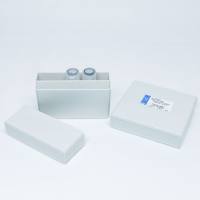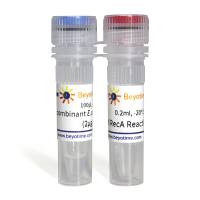Flexible Genetic Engineering Using RecA Protein
互联网
634
The analysis or manipulation of small segments of DNA in plasmids has long been routine, but standard methods fail or are very time consuming when applied to long segments or complex mixtures of DNA. At present, RecA protein-based techniques usually have been used for making defined changes in large DNA constructs or for precise physical mapping of large regions of genomic DNA from several organisms. The techniques offer a rapid and versatile “cut and paste” approach to several other problems in molecular biology, and their use will probably increase as the goals of experiments with DNA and chromosomes evolve in sophistication. For example, they can now be used to analyze rearranged DNA in individual tumors or genetic deletions in patients with inherited or acquired syndromes. A new variation involving sequencespecific ligation may also eventually be used to rapidly screen libraries, label DNA fragments, or amplify large segments of DNA (1 ).









